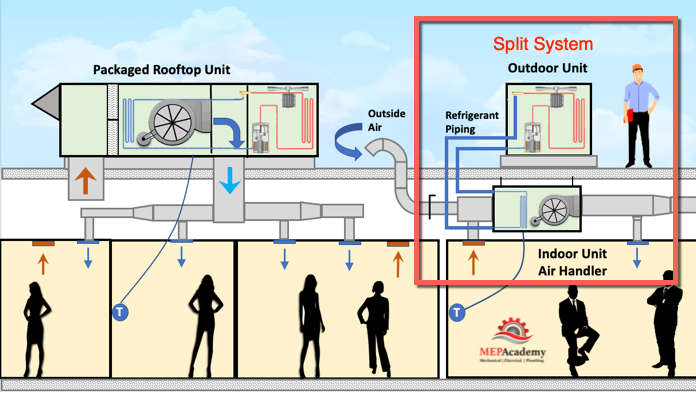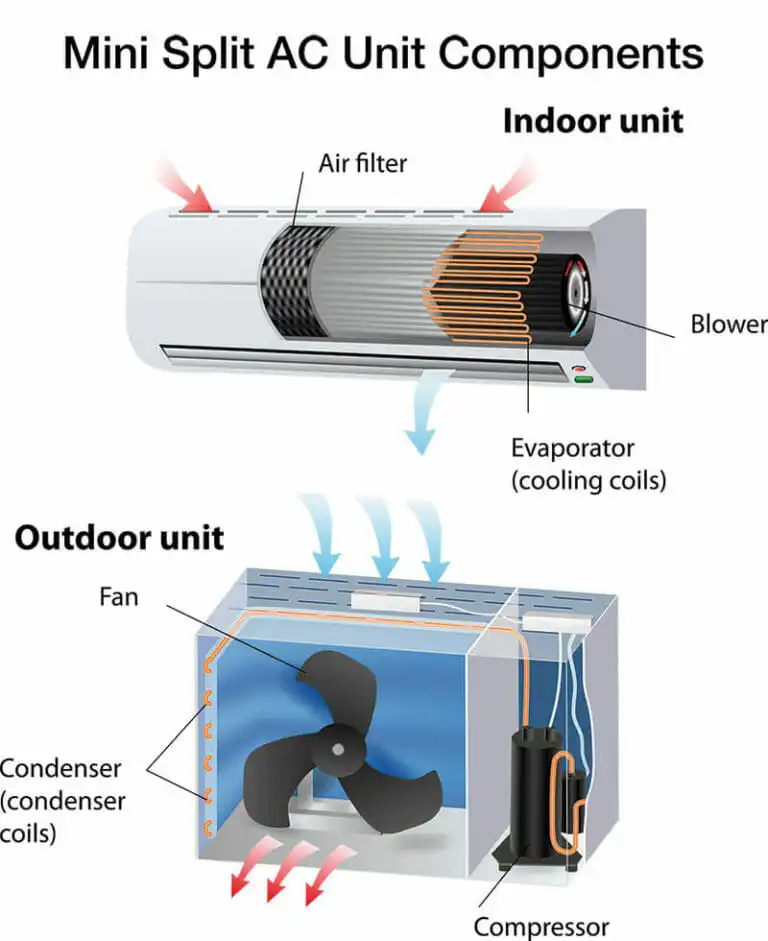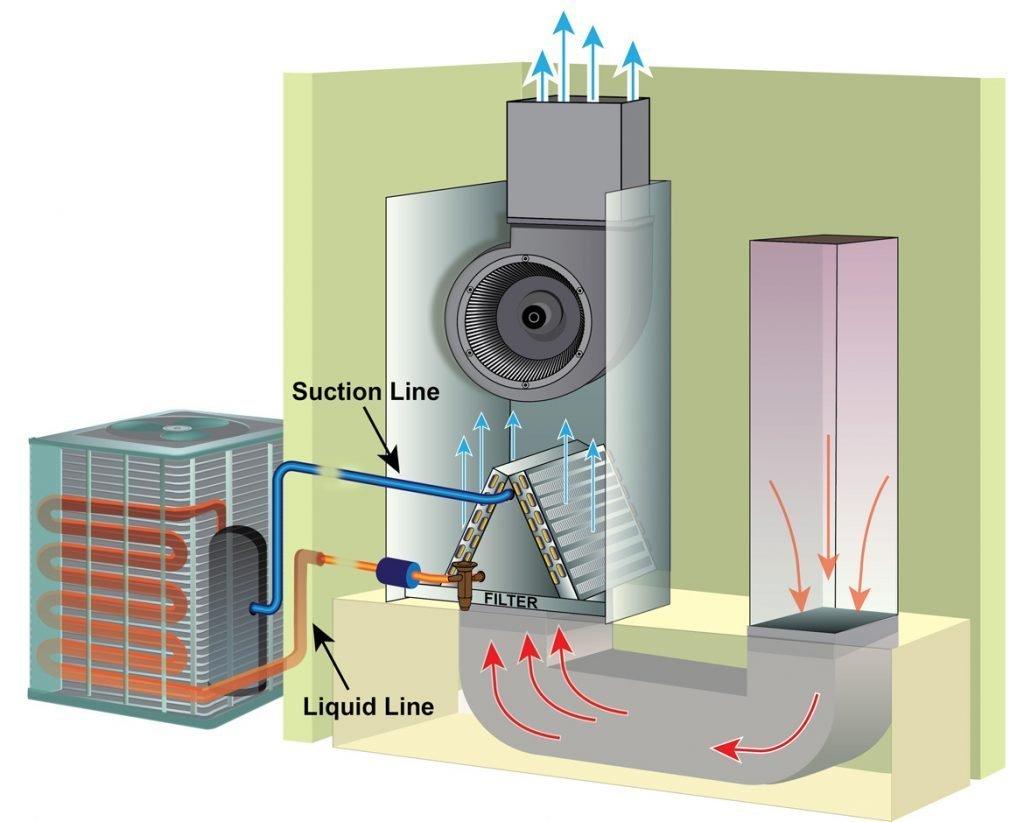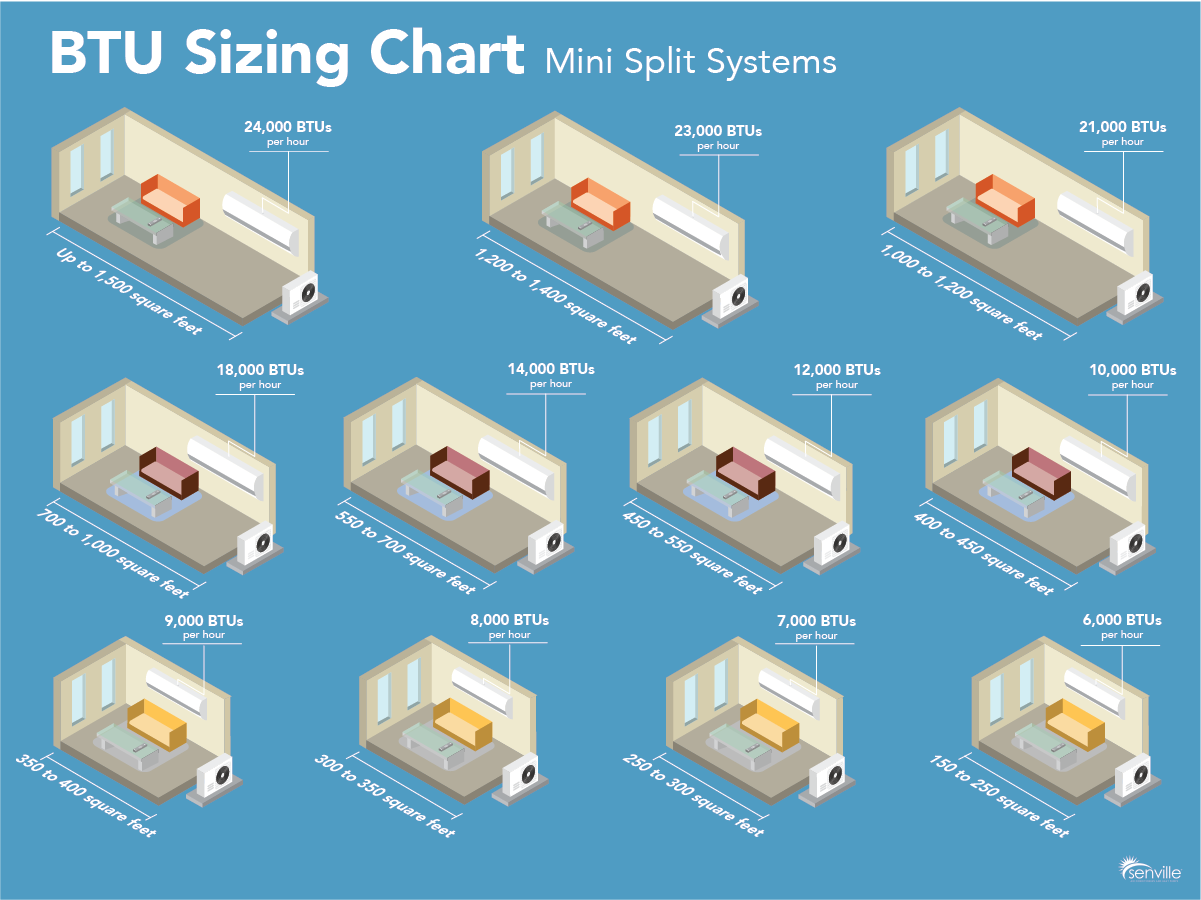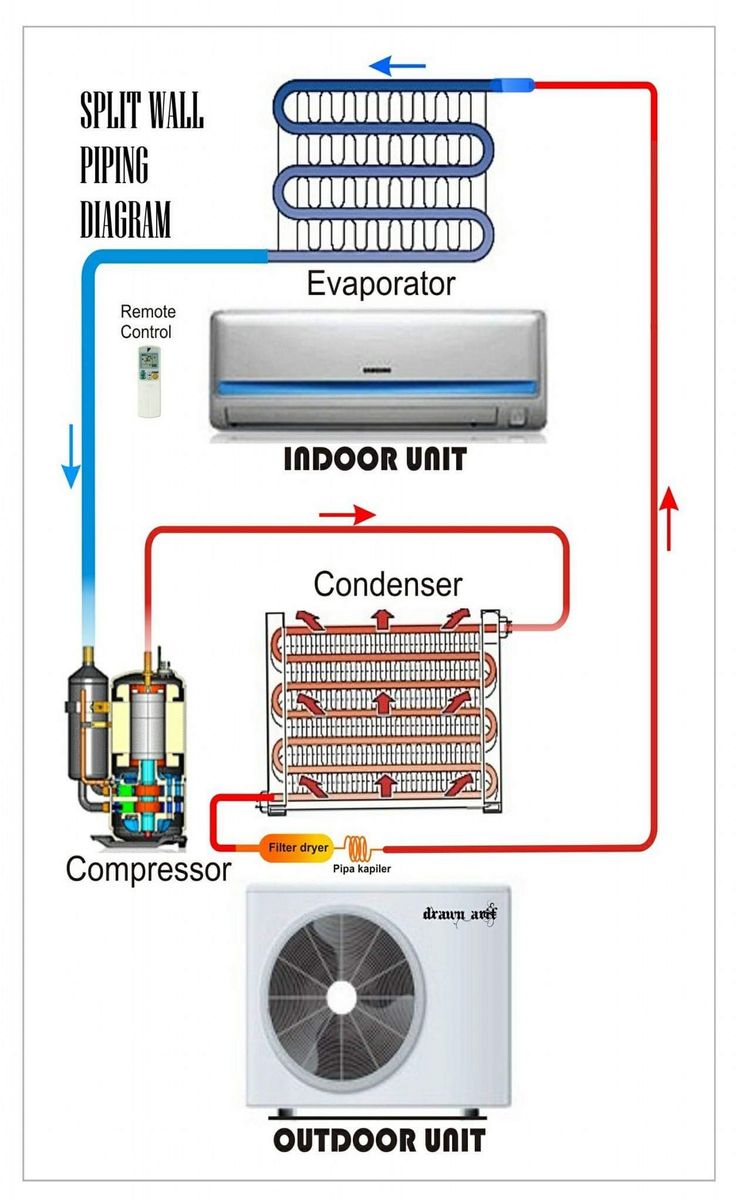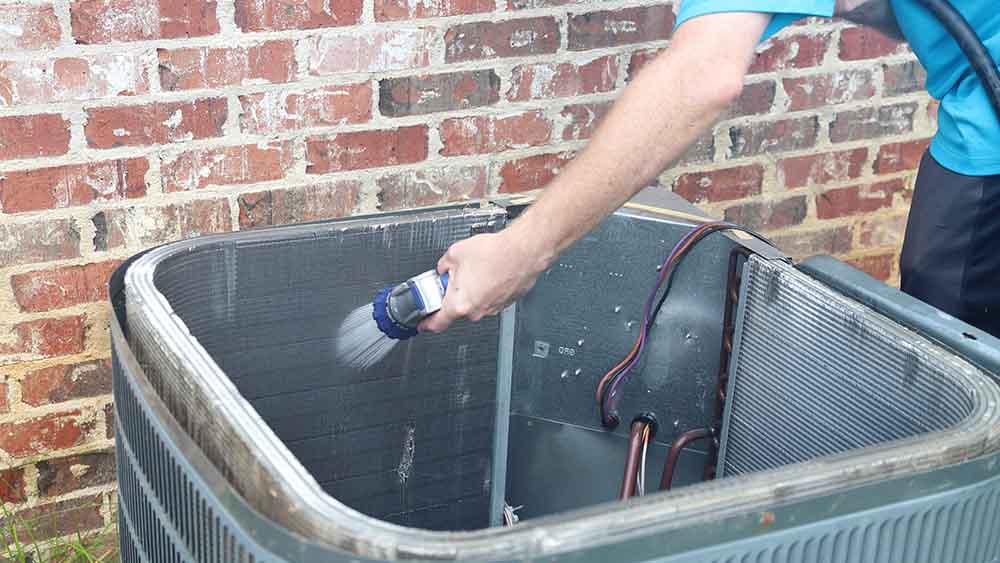📘Split System Basics
📷 System Diagram
Figure 1: A basic layout showing the indoor air handler, refrigerant lines, and outdoor condensing unit.
🧰 What is a Commercial Split System?
A commercial split system separates the HVAC components between:
-
An outdoor unit (compressor + condenser)
-
An indoor unit (evaporator coil + blower or air handler)
Figure 2: Indoor evaporator unit paired with condensing unit.
🔧 Key Components
🔹 Outdoor Unit
-
Compressor
-
Condenser Coil
-
Outdoor Fan Motor
-
Weather-resistant housing
🔹 Indoor Unit
-
Evaporator Coil
-
Blower or Air Handler
-
May include electric heat or hydronic heating coil
Figure 3: Diagram of an indoor evaporator coil and airflow.
📏 Typical Sizes and Capacity
-
Tonnage Range: 3 – 25 tons
-
Voltage: 208/230V or 460V (3-phase)
-
SEER Rating: Commercial SEERs usually range from 13 to 17
Figure 4: General sizing chart by square footage and tonnage.
🧱 Installation Considerations
Figure 5: Piping and line set routing for commercial split install.
-
Mounting slab or curb for the outdoor unit
-
Ensure line set length and elevation are within manufacturer limits
-
Proper drainage setup for indoor unit
-
Access space for filters, coil cleaning, and service
🧼 Maintenance Requirements
Figure 6: Routine coil cleaning on a commercial split condenser.
✅ Advantages
-
Zoning flexibility
-
Quieter indoor operation
-
Easier indoor maintenance
-
More design flexibility for limited rooftop space
⚠️ Disadvantages
-
Not modular or scalable like VRF
-
More complex installation than packaged RTUs
-
Line set length limits may restrict placement
🛠️ Common Field Issues
-
Undetected refrigerant leaks from long line sets
-
Coil or filter fouling
-
Electrical faults on outdoor disconnects
-
Faulty thermostats or improper control wiring
📎 Training & Resources
🧠 Summary
Commercial split systems are a reliable HVAC option for small to mid-sized buildings where flexibility, performance, and localized control are priorities. Understanding proper design, maintenance, and installation principles ensures long-term efficiency and comfort.

